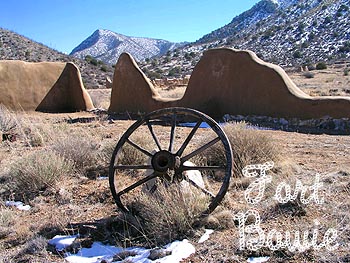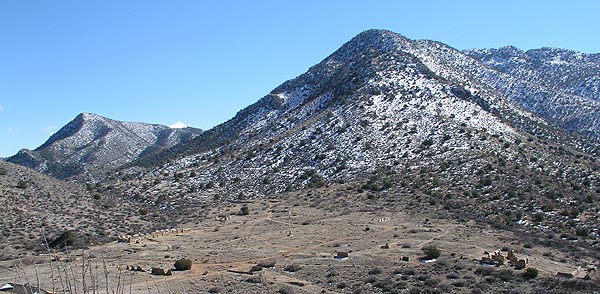|
In Search Of ...The Old West
Where Ghosts Still Haunt the Region Chris, a friend from the old neighborhood, and I went to find the the remnants of the Old West at Fort Bowie in the Apache Pass between the Chiracha and Dos Cabezas mountains.On our drive there along back roads we came across a wagon train that was eerily reminescent of transportation in the 1800's. It was a fitting start to our journey to find the Butterfield Stage trail and an 1880's Army post situated near Apache Spring. | ||||||||||||||||||||||
 Fort Bowie was established in 1862 to protect Apache Pass, through which emigrants and prospectors streamed into Chiricahua Apache territory. The fort grew to about 38 buildings between 1862 and its closure in 1894, by which time the Apaches were subdued and Geronimo captured.
Fort Bowie was established in 1862 to protect Apache Pass, through which emigrants and prospectors streamed into Chiricahua Apache territory. The fort grew to about 38 buildings between 1862 and its closure in 1894, by which time the Apaches were subdued and Geronimo captured.In the distance, beyond the outer wall of the fort, stood the cavalry barracks. Beyond them are the Chiricahua mountains, touched with snow on the February day we visited. | ||||||||||||||||||||||
 Fort Bowie lies on a sloping field nestled along the southern flank of the Chiricahuas. It protects the nearby Apache Spring, which, as a constant source of water in the desert, drew the Butterfield Stage line through this area as early as 1858. This view from an overlooking ridge minimizes the scale of the fort and buildings, which sprawl over several acres. The post parade ground and flagpost is just to the left of the middle of the photo. The cavalry barrack are to the left; the infantry barracks and sutler's store (post trader) are to the right. | ||||||||||||||||||||||
| ||||||||||||||||||||||
|